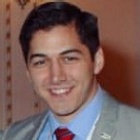Phillip M. Maffettone
Research Associate
University of Liverpool
Monday, July 1, 2019
Intelligent automation of materials discovery
While automation has made some tremendous steps forward in recent decades, these achievements have yet to be adapted and combined into a truly autonomous system for materials science. With present developments for isolated components of materials research (e.g., crystal structure computation, crystallization assays, reactors, and analytical instrumentation) there is a pressing need for holistic integration and intelligent guidance, to mitigate human bottlenecks.
This talk will present autonomous approaches for rapid materials simulation, experimentation and analysis with the prospect of developing closed loops of materials discovery. I will discuss the use of Bayesian optimization with mobile robotic workflows for autonomous experimentation. This will be paired with recent developments in high throughput classification of powder X-ray diffraction data via neural networks. Lastly, I will explain the challenge of using deep learning methods for exploring the phase space of materials and how this can be overcome by using crystallographically inspired representations. The ability for these representations to capture periodic structural information will be demonstrated through classification and regression problems. Merging deep learning with energy-structure-function maps and autonomous experiments, our group seeks to create not just automation, but autonomous discovery.
Biography
Dr. Phillip M. Maffettone is currently a Research Associate in the Department of Chemistry at the University of Liverpool, where he is focused on developing the laboratory of the future using artificial intelligence to combine simulation and autonomous experimentation. Phil is a UB alumni (2014), who began his research career in Prof. Mark Swihart’s lab as an undergraduate studying silicon nanoparticle synthesis and applications. After receiving a Marshall Scholarship, he completed his DPhil in Inorganic Chemistry at the University of Oxford (2018) titled, Informed modelling of disorder: From spaghettis to meatballs. This work focused on simulating disorder in diffraction where Bragg’s law breaks down; spanning perovskites to proteins it promoted a healthy disregard for disciplinary boundaries.
Monday, July 1, 2019
- Time: 11:00 AM
- Location: 206 Furnas
- Seminar Flyer

Phillip M. Maffettone
Research Associate
University of Liverpool